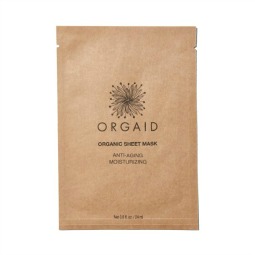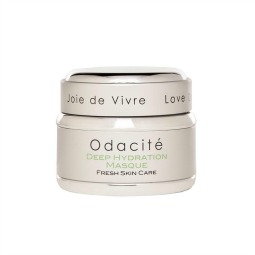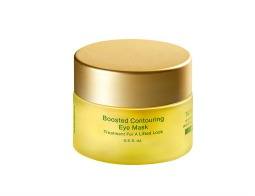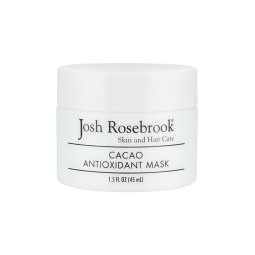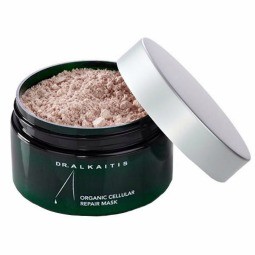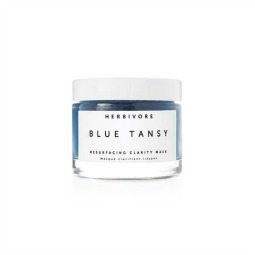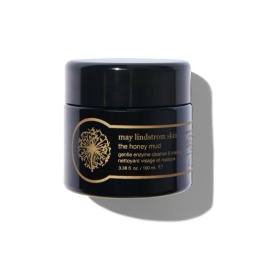At Last: Multi-Masking Could Be the Answer to *Every* Combination Skin Problem
Whenever I put on a mask to make my skin glow, I often end up with a nose that "glows" too much—in an unfortunate, Rudolph The Red-Nosed Reindeer kind of way (i.e. schnoz-specific acne). But according to my Instagram feed I shouldn't have to choose between moisturizing my thirsty skin and treating my blemish-prone T-zone. Check out the hashtag #multimasking if you don't believe me. There are innumerable results that suggest my single-mask strategy is outdated.
This newer trend involves the use of—you guessed it—multiple masks at once, which are strategically applied to different parts of the face to address the specific concerns of each area. When I ask celebrity esthetician Shani Darden—who counts Jessica Alba, Rosie Huntington Whitely, and Chrissy Teigen among her clients—if multimasking is a thing I should be doing, she answers in the affirmative. "Your eyes, chin, cheeks, and nose can have different issues to address, and the same type of mask wouldn’t be right for all of those areas," she explains. Because no matter if you're dealing with an oily T-zone and dry cheeks or rouge pimples that show up that time of the month, a lot of people are battling some form of combination skin (even if it isn't textbook), according New York City-based dermatologist Dr. Arielle Kauvar.
Masks are usually applied in a thick layer and have different bases (such as water, oil, and clay), so layering them may not allow penetration of all the ingredients.
First thing's first: Your skin should be clean and dry and masks should be applied next to each other as opposed to layered one on top of the other. "Masks are usually applied in a thick layer and have different bases (such as water, oil, and clay), so layering them may not allow penetration of all the ingredients," says Kauvar. In other words, your products will be most effective if you make your face into a mask mosaic of sorts.
There's no set prescription for which mask to put where—especially given that each person's skin is so radically different—but Darden, Kauvar, and Rianna Loving, esthetician and founder of Organic To Green Sauna Bungalow & Spa, provide some general guidelines.
Keep reading to learn more on how to multimask like a pro.
T-zone, oily, or acne-prone areas
Loving recommends targeting your T-zone, first. "I recommend clay-based masks—like Kaolin clay, bentonite clay, charcoal, and even colloidal oatmeal—for T-zone and any other areas where you experience oil or breakouts," she says. Darden, meanwhile, specifically recommends sulfur versions to address these acne-prone areas. "They're incredible for treating breakouts as they absorb excess oil, draw out impurities, and help to soothe inflamed skin," she says.
{{post.sponsorText}}
Though some products targeted toward these problem areas will contain acids such as salicylic or lactic, Loving suggests using them to spot-treat, only (as opposed to rubbing them all over your nose, for example). They can cause irritation, she says.
Shop acne masks
Dry skin
When working with parched skin (typically the cheeks in many people), Darden recommends looking specifically for sheet masks that contain hydrating hyaluronic acid. "[Sheet delivery] will help the serums to penetrate deeply into the skin and seal in the hydration," she explains. And you can cut the sheet mask and place it on the area that you're trying to hydrate. Another hydration helper is squalane and Loving recommends masks that contain soothing plant extracts such as aloe.
Shop hydrating masks
Under-eye puffiness
The under-eye area, Loving says, are best treated with masks that contain calming ingredients like cucumber, colloidal oatmeal, and rose water (best applied with de-puffing powerhouse jade rollers). Kauvar suggests looking for products that purport to be "soothing" and "calming," she says. Darden, meanwhile, again recommends hyaluronic acid for its plumping prowess. "You can store them in the refrigerator and take them out when you’re ready to use," she says. "The cool mask will help to de-puff and hydrate."
Shop eye masks
Fine lines and wrinkles
Three for three, Darden, again suggests going with a hyaluronic acid to smooth out fine lines: "It’s going to help skin hold on to moisture and plump it up to smooth out fine lines and wrinkles," she says. Loving agrees with this strategy and also recommends vitamin c, cacao, amino acids like leucine, peptides, and collagen. Kauver addes that these anti-aging masks should focus on "repair" and "resurfacing."
Shop anti-aging masks
Neck and décolletage
When multimasking, the experts suggest addressing these oft-forgotten areas too. "You can take all of your treatments—exfoliation, masks, serums, and moisturizers—down your neck and chest," says Darden. She cautions, however, that the neck area can be sensitive, so you may want to introduce new masks gradually. For this reason, and because skin here also tends to be drier than in other areas, Kauvar recommends masks that are meant to be calming, anti-inflammatory, and hydrating. Loving further offers that gel-based masks may be the most effective option for your neck and chest area.
Shop neck & chest masks
Not sure which masks to use? The Unbreakable Kimmy Schmidt star Lauren Adams has an entire Instagram account dedicated to reviews. Plus, this might be the fanciest—and least messy—way to de-puff your eyes, ever.
Loading More Posts...


